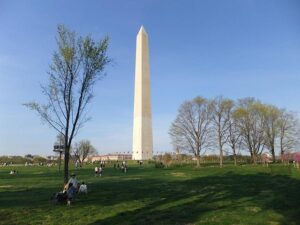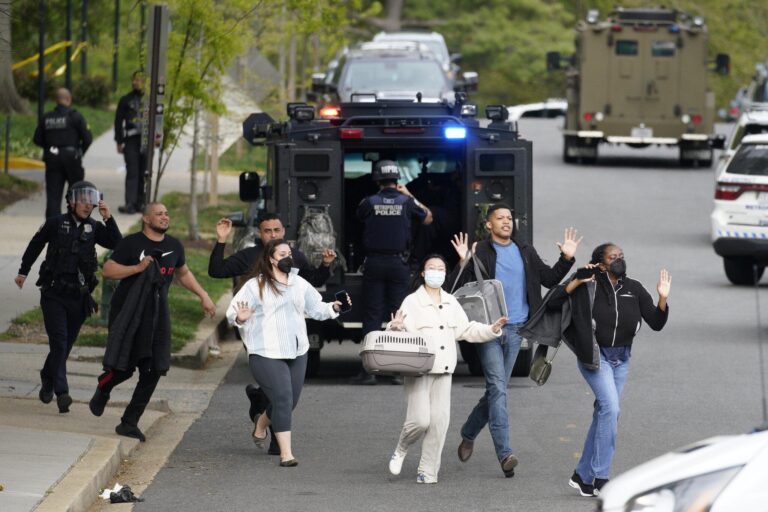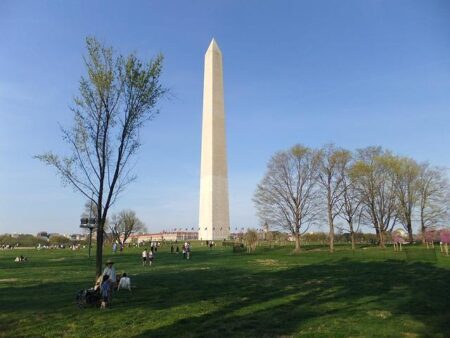Deadly Shootings Spread Across Washington, D.C., Resulting in Four Deaths
On Tuesday, Washington, D.C. experienced a disturbing wave of gun violence, with five distinct shooting incidents occurring in various neighborhoods throughout the day. These violent episodes tragically resulted in the deaths of four people and left multiple others wounded. Law enforcement agencies responded promptly to each location, but investigations remain active as authorities work to unravel the circumstances behind these fatal attacks.
Key facts reported so far include:
- The shootings took place between 4 PM and 9 PM across the Northwest, Northeast, and Southeast areas of the city.
- Victims’ ages ranged from early 20s to late 40s, reflecting a broad demographic impact.
- No suspects have been apprehended yet; police are appealing to the public for any information.
- Community representatives have voiced serious alarm over the recent spike in firearm-related violence.
| Time | Neighborhood | Fatalities | Injuries |
|---|---|---|---|
| 4:30 PM | Capitol Hill | 1 | 2 |
| 6:00 PM | Columbia Heights | 0 | 1 |
| 7:45 PM | Deanwood | 2 | 0 |
| 8:15 PM | Petworth | 1 | 1 |
| 8:50 PM | Anacostia | 0 | 1 |
Understanding the Root Causes of the Recent Gun Violence
The recent surge in shootings across Washington, D.C. underscores a complex and persistent issue of urban gun violence that requires a comprehensive approach. Law enforcement officials and social experts highlight several intertwined factors fueling this trend, including heightened gang conflicts, widespread availability of illegal firearms, and socio-economic hardships intensified by ongoing economic instability. The clustering of these violent events in specific neighborhoods points to systemic challenges such as entrenched poverty, limited access to quality education, and inadequate community support systems that perpetuate cycles of violence.
Primary contributing factors under examination include:
- Economic inequality: Persistent disparities in wealth and opportunity create environments where violence often emerges as a symptom of broader social distress.
- Gang-related conflicts: Territorial disputes and retaliatory violence among gangs remain significant catalysts for clustered shooting incidents.
- Proliferation of firearms: The easy availability of illegal guns exacerbates both the frequency and deadliness of violent encounters.
- Challenges in policing: Limited resources and strained community-police relations hinder effective crime prevention and resolution.
| Neighborhood | Shootings Reported Last Week | Unemployment Rate |
|---|---|---|
| Anacostia | 8 | 15% |
| Shaw | 5 | 12% |
| Columbia Heights | 4 | 10% |
Community Reactions and Initiatives Addressing Gun Violence
Local residents and advocacy groups have voiced profound concern over the recent escalation in gun-related violence, which has disrupted the fabric of daily life in affected neighborhoods. Community leaders are urging stronger partnerships between law enforcement and citizens to tackle the underlying causes of this crisis. In response, several neighborhood coalitions have launched community forums and safe zone programs designed to encourage open dialogue and raise awareness about personal and public safety.
Support systems have also been mobilized rapidly, offering assistance to families impacted by violence and expanding youth engagement efforts. Notable initiatives include:
- Trauma recovery counseling for survivors and witnesses of shootings
- After-school conflict resolution workshops aimed at empowering young people with non-violent problem-solving skills
- Volunteer-led neighborhood patrols to supplement police presence and deter crime
- Collaborations with local businesses to fund and promote violence prevention campaigns
| Program | Organizing Group | Objective |
|---|---|---|
| Safe Streets Initiative | DC Neighborhood Watch | Decrease shootings through community-led patrols |
| Youth Leadership Workshops | Urban Future Foundation | Promote peaceful conflict resolution among youth |
| Victim Assistance Network | Healing Hands DC | Offer trauma support and legal guidance |
Strategic Policies and Law Enforcement Efforts to Reduce Gun Violence
Combating the rise in shootings requires a holistic strategy that combines community involvement with targeted law enforcement actions. Strengthening gun control measures‚ÄĒsuch as expanding gun buyback programs, enhancing background checks, and closing loopholes in firearm sales‚ÄĒcan play a pivotal role in limiting access to illegal weapons. Moreover, increasing investment in violence interruption programs and social services that address poverty, education gaps, and mental health is essential for long-term prevention.
Effective enforcement must be data-informed and collaborative, involving coordination among local police, federal agencies, and community stakeholders. Recommended approaches include:
- Utilizing predictive analytics to pinpoint high-risk areas and habitual offenders.
- Enhancing officer training focused on de-escalation techniques and culturally sensitive community engagement.
- Forming specialized task forces dedicated to swift investigation and prosecution of gun-related crimes.
| Initiative | Anticipated Impact | Implementation Timeline |
|---|---|---|
| Expanded Background Checks | Decrease in illegal firearm transactions | 6 to 12 months |
| Violence Interruption Programs | Reduction in repeat violent offenses | 1 to 3 years |
| Specialized Gun Crime Task Forces | Accelerated case processing and resolution | Within 6 months |
Conclusion: Addressing the Ongoing Challenge of Gun Violence in D.C.
The tragic shootings that unfolded across Washington, D.C. on Tuesday serve as a stark reminder of the persistent gun violence crisis facing the city. As investigations continue to identify those responsible, community leaders and law enforcement officials alike stress the urgent need for comprehensive, multi-layered solutions that tackle the root causes of violence. Through strengthened policies, enhanced community engagement, and targeted law enforcement efforts, there is hope for restoring safety and stability to neighborhoods throughout the capital. Our coverage will remain updated as new developments emerge.







